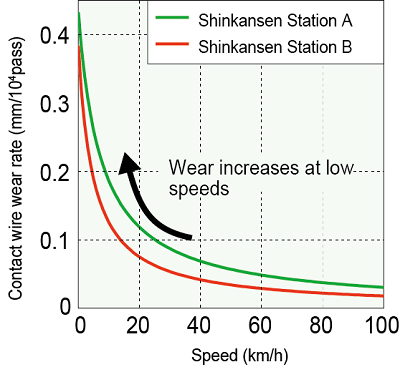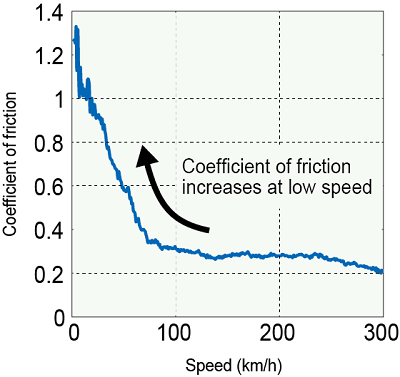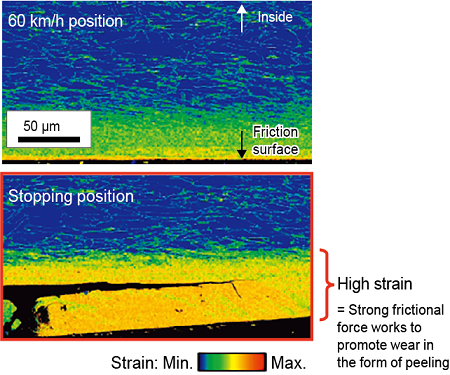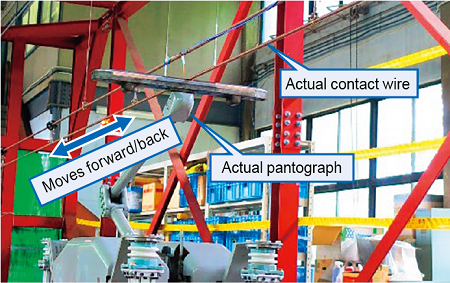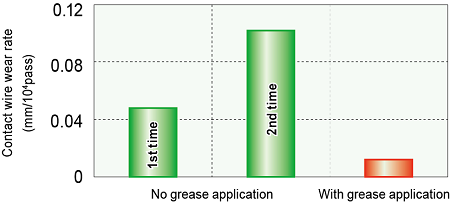24. Mechanism of increasing wear rate of contact wires near pantograph stopping positions of Shinkansen
The wear rate of the contact wires of Shinkansen is high within station yards and other low-speed sections of track.
For this reason, contact wires need to be replaced frequently, frustrating efforts to reduce maintenance costs.
To understand why wear rate is high at low speeds, we examined the relationship between the wear rate of contact wires and travel speed, observed the cross-sectional structure of worn contact wires, and conducted sliding experiments over a wide range of speeds.
Data on the wear distribution of contact wires and train travel speed in a station yard revealed that the contact wire wear rate has the characteristic of increasing rapidly at low speeds (Fig. 1). Based on measurements in experiments to determine the train-speed dependency of the coefficient of friction (Fig. 2) and observations and analysis of the cross-sectional metallographic structure of actual contact wires using an electron microscope (Fig. 3), it is likely that wear rate increases at low speeds because an increase in coefficient of friction promotes a type of wear in the form of peeling known as “delamination wear.”
As a measure to limit delamination wear, we considered using lubrication to reduce the coefficient of friction.
For this purpose, we fabricated a new laboratory test facility capable of simulating low-speed travel conditions (Fig. 4) and investigated the impact of grease on wear reduction. Our findings confirmed that the wear rate was reduced by 75% or more as long as the grease adhered to the contact wire (Fig. 5). We are now planning to verify the sustainability of the wear-reducing effect of external lubrication in operating trains.
Other Contents
- 22. Earthquake early detection method based on deep learning of seismic motion
- 23. HILS for the current collection systems using a High-Speed Test Facility for Pantograph/OCL Systems
- 24. Mechanism of increasing wear rate of contact wires near pantograph stopping positions of Shinkansen
- 25. Text analysis codes for human error analysis
- 26. Method of visualizing sound wave propagation for clarification and prediction of railway noise
- 22. Earthquake early detection method based on deep learning of seismic motion
- 23. HILS for the current collection systems using a High-Speed Test Facility for Pantograph/OCL Systems
- 24. Mechanism of increasing wear rate of contact wires near pantograph stopping positions of Shinkansen
- 25. Text analysis codes for human error analysis
- 26. Method of visualizing sound wave propagation for clarification and prediction of railway noise

